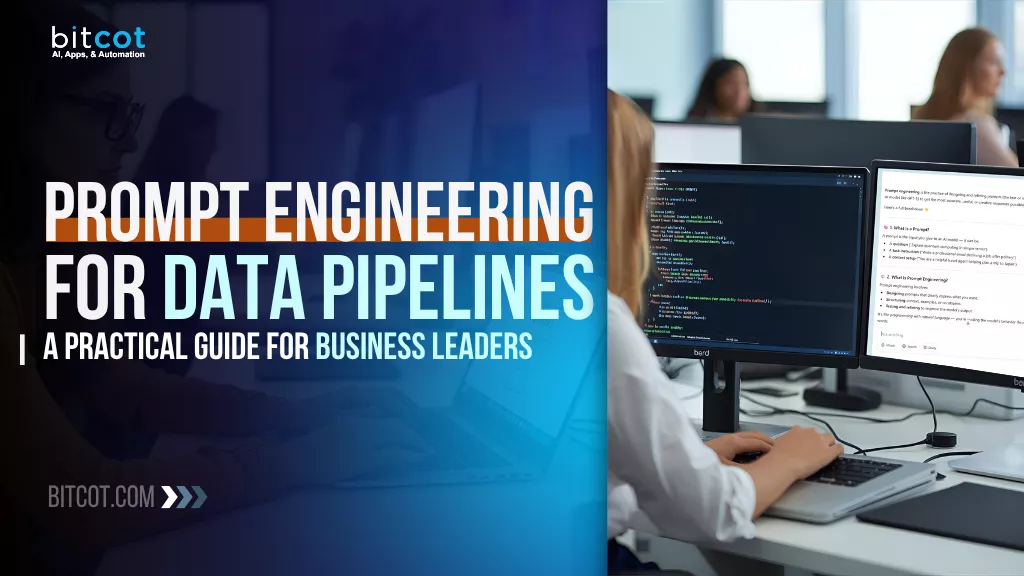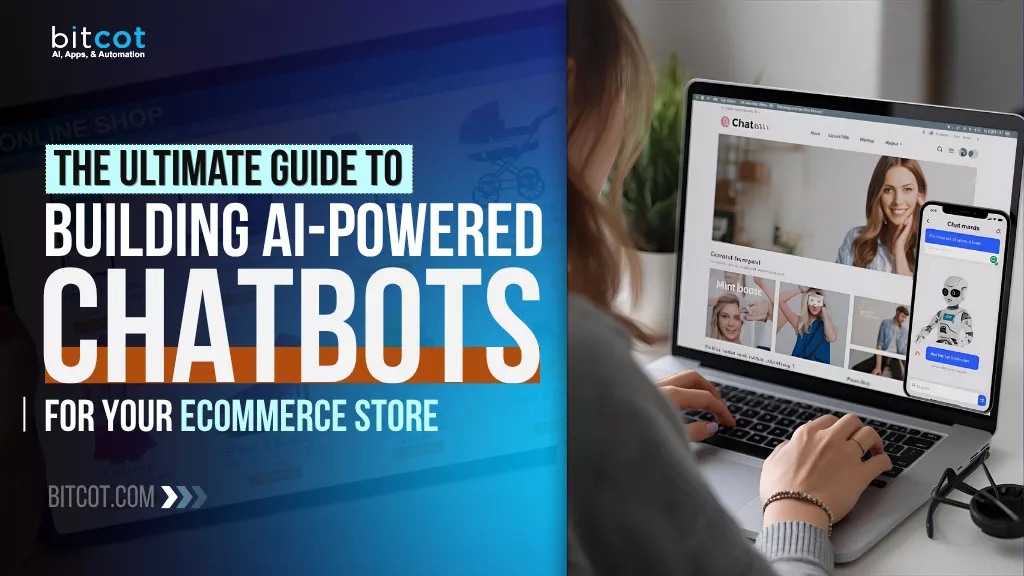
For business leaders exploring AI-powered solutions, terms like RAG, Agentic RAG, and MCP are now at the center of strategy discussions. But what do they actually mean, and which one is right for your organization?
This guide cuts through the technical jargon and gets straight to the point:
- What are these AI frameworks?
- How do they differ in capabilities and complexity?
- Which is best suited for your goals?
Whether you’re leading a digital transformation initiative or simply looking to make smarter decisions with AI, this side-by-side comparison of Retrieval-Augmented Generation (RAG), Agentic RAG, and the Model Context Protocol (MCP) will help you confidently choose the right approach.
Let’s break it down.
What Are RAG, Agentic RAG, and MCP?

Before diving into comparisons, let’s define each approach in clear, business-relevant terms: what they are, what they do, and where they fit in real-world AI use cases.
RAG (Retrieval-Augmented Generation)
RAG enhances large language models (LLMs) by letting them “look things up.” Instead of relying only on what the model was trained on, RAG retrieves relevant documents or knowledge from an external source (like a database or vector store) before generating a response.
Use it for:
- Chatbots that answer based on company knowledge.
- Customer service bots with access to FAQs and manuals.
- Sales reps that summarize case studies or product info on demand.
Strength: High-accuracy answers using up-to-date, controlled content.
Limitation: Passive; answers only what’s asked, no autonomy or reasoning.
Agentic RAG
Agentic RAG adds goal-driven reasoning to traditional RAG. RAG AI agents and Agentic RAG represent two stages of intelligent retrieval systems, starting with basic response generation and evolving into systems with planning and tool-use capabilities.
This evolution introduces a layer of autonomy that RAG alone cannot achieve. Instead of just answering questions, the AI becomes an agent that can plan steps, retrieve multiple pieces of information over time, use tools (like web search or APIs), and reflect on progress toward a goal.
Use it for:
- Research agents that proactively gather insights.
- Internal assistants that answer, verify, and summarize from multiple sources.
- Complex workflows where context evolves.
Strength: Autonomy + search = more useful, more flexible.
Limitation: Harder to control, test, or explain compared to simple RAG.
RAG AI agents and Agentic RAG represent two stages of intelligent retrieval systems, starting with basic response generation and evolving into systems with planning and tool-use capabilities. This evolution introduces a layer of autonomy that RAG alone cannot achieve.
MCP (Model Context Protocol)
MCP is a framework for building modular, transparent, and fully autonomous AI agents. It organizes everything an agent needs, its memory, tools, instructions, and roles, into a reusable “protocol” that drives how it reasons, acts, and evolves.
Use it for:
- Building AI agents with MCP that interact seamlessly with tools, data, and people.
- Agents that learn from feedback and adapt over time.
- Enterprise AI that’s structured, auditable, and explainable.
Strength: Full agent control, modularity, and long-term memory.
Limitation: Requires thoughtful design; best used when agents must act autonomously with accountability.
How RAG, Agentic RAG, and MCP Differ: Side-by-Side Comparison

The comparison of MCP vs RAG in AI highlights the progression from simple retrieval-based responses (RAG) to more dynamic, goal-oriented systems (Agentic RAG), and ultimately to MCP, offering long-term memory, autonomy, and multi-system integration.
The table below makes it easy for you to see the trade-offs:
- RAG is best for quick wins with static content.
- Agentic RAG is a smart bridge when goal-based reasoning is needed.
- MCP is for building durable, intelligent systems with real decision-making power.
| Feature / Capability | RAG | Agentic RAG | MCP |
| Primary Function | Answering questions using retrieved content | Multi-step reasoning with goal-driven retrieval | Building modular, fully autonomous agents |
| Autonomy | None | Partial (task-focused) | Full autonomy (reasoning + action) |
| Memory | Stateless | Limited (per session/task) | Persistent memory & state tracking |
| Use of Tools | None | Can use tools/APIs during reasoning | Tool-using via structured interface |
| Task Complexity | Simple Q&A | Medium-complex (e.g., research, synthesis) | High-complex (multi-tool, multi-step workflows) |
| Best For | Knowledge chatbots, FAQ bots | Research agents, assistant-style tasks | Enterprise agents, automation copilots |
| Speed to Deploy | Fast | Moderate | Requires design + engineering effort |
| Explainability / Observability | Transparent | Mixed (depends on setup) | Fully observable (with logs + state) |
| Control Over Behavior | Limited to prompt + retrieval logic | Medium (via planner or policy) | High (modular logic, memory, goals) |
| Scalability Across Use Cases | Narrow (content-based) | Broader (task-based) | Wide (agent-based across business units) |
Which One Should You Use: RAG, Agentic RAG, or MCP?
Each of these approaches, RAG, Agentic RAG, and MCP, has clear strengths. The right choice depends on your business goals, technical capabilities, and the complexity of the tasks you’re trying to automate.
Let’s break it down by use case:
Use RAG if…
- You need a fast, accurate chatbot that pulls from documents or a knowledge base.
- Your users are asking direct questions with relatively short answers.
- You want tight control over what the AI says, using trusted content.
- Example: Customer service bots, policy lookup tools, product assistants.
RAG is ideal for content-rich workflows where accuracy matters more than autonomy.
Use Agentic RAG if…
- Your team needs AI to reason through tasks, not just answer them.
- You’re working with research-heavy, multi-step questions.
- You want to simulate a helpful assistant, not just a search engine.
- Example: Market research agents, onboarding helpers, email summarizers.
Agentic RAG is a step toward AI assistants; great for knowledge work that needs judgment.
Use MCP if…
- You want to build fully autonomous AI agents that can think, act, and adapt.
- Your use case involves long-term workflows, decision-making, or tool orchestration.
- You need structure, memory, and auditability.
- Example: AI project managers, internal productivity agents, multi-department AI copilots.
MCP is for serious automation when AI becomes part of your business infrastructure.
Why Bitcot is the Right Partner No Matter Which AI Framework You Choose

The real challenge isn’t just implementing AI; it’s navigating the trade-offs between simplicity, autonomy, and system intelligence when deciding between RAG vs Agentic RAG vs MCP.
Each framework serves a different level of AI maturity, and implementing the wrong one can lead to wasted time, misaligned tools, and underwhelming outcomes.
That’s why companies choose Bitcot; not just to build, but to guide.
We help you identify which AI architecture best fits your operations right now, and then grow it strategically as your needs evolve. From enhancing internal operations to launching transformative digital products, we’re the AI development partner that understands both business and architecture.
Step 1: We Start with Business Goals
At Bitcot, we don’t ask what model you want; we ask:
- What decision bottlenecks are slowing your teams down?
- What processes are ready to be enhanced or automated?
- Who needs better support: customers, internal teams, or leadership?
This helps us map the right level of AI intelligence and autonomy to your real-world goals, whether that’s instant information (RAG), research and planning (Agentic RAG), or autonomous task handling (MCP).
Step 2: We Build with the Right Framework for Right Now
Once we’ve clarified your goals, we design and build using the framework that fits your current business readiness:
- RAG → When your priority is fast, accurate answers from internal data.
Example: A knowledge assistant trained on your HR policies or product manuals.
- Agentic RAG → When you need goal-driven, step-by-step reasoning with smart retrieval.
Example: A sales research agent that pulls competitive insights and drafts summaries.
- MCP → When you’re ready for autonomous agents that can make decisions, use tools, track memory, and complete workflows.
Example: An internal productivity agent that manages project updates, meetings, and resource coordination.
We don’t force-fit your needs into a platform; we build around your needs with precision.
Step 3: We Future-Proof Your AI with Scalable Design
Bitcot structures every AI solution with the long-term roadmap in mind:
- Want to start with RAG today, but add autonomy later? No problem.
- Need to integrate your agent into Slack, HubSpot, or internal APIs? We’ve got you.
- Want traceability, control, and security from day one? That’s built into how we operate.
With Bitcot, you don’t just get a chatbot or an LLM wrapper. You get a scalable, modular system that evolves with your organization.
Step 4: We Deliver Results, Not Experiments
AI is a business asset, not a prototype. That’s why we focus on:
- Speed to launch with MVP agents that deliver value quickly
- Strategic iteration through feedback loops, usage data, and retraining
- Performance tracking so you know what’s working, where to improve, and how to scale
Our clients don’t just get AI; they get momentum.
Final Thoughts
The difference between RAG, Agentic RAG, and MCP isn’t just technical; it’s strategic.
- RAG gives you a fast path to better answers.
- Agentic RAG helps you tackle more complex, goal-oriented tasks.
- MCP empowers you to build long-term, autonomous AI agents that can reason, act, and evolve.
Whether you’re exploring your first AI assistant or preparing to deploy autonomous agents across departments, Bitcot can help you build the right foundation.
We help businesses:
- Design and deploy RAG-based assistants for fast, accurate answers
- Build Agentic RAG systems that support complex research and planning
- Implement MCP agents that integrate with tools, remember state, and drive real productivity
Ready to choose the right AI strategy for your business?
Schedule a free consultation with our team.
FAQs
What’s the biggest difference between RAG, Agentic RAG, and MCP?
RAG focuses on retrieving relevant data and answering questions. Agentic RAG adds reasoning, letting the AI plan and act toward a goal. MCP is a full framework for building structured, autonomous AI agents with memory, tools, and control mechanisms.
Which one is easiest to deploy quickly?
RAG is the easiest and fastest to deploy; it’s often used for AI-powered knowledge assistants or chatbots. Agentic RAG takes longer because it involves multi-step planning. MCP requires careful design, but it is the most flexible and future-proof.
Is MCP overkill for my use case?
Not necessarily. If your use case involves multi-step decisions, tool usage, or long-running tasks, MCP is ideal, even at an early stage. For simpler projects (like answering FAQs or document search), RAG is a more appropriate (and faster) starting point.
Can I start with RAG and upgrade to Agentic RAG or MCP later?
Yes. Many teams start with a basic RAG setup, then layer in agentic behavior (like planning and tool use), and eventually evolve into MCP-based systems with memory, autonomy, and integration across systems. The Agentic RAG vs MCP AI debate comes down to the level of autonomy needed.
When it comes to Agentic RAG vs MCP, the choice depends on your project.
What if I’m not sure which approach fits my business best?
That’s exactly what we help with. Bitcot starts with a use-case discovery session to evaluate your goals, pain points, and existing systems, then recommends the best-fit AI approach, whether it’s RAG, Agentic RAG, or MCP. Get in touch with us.












